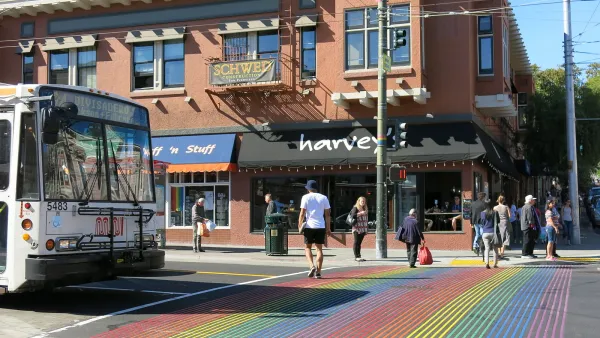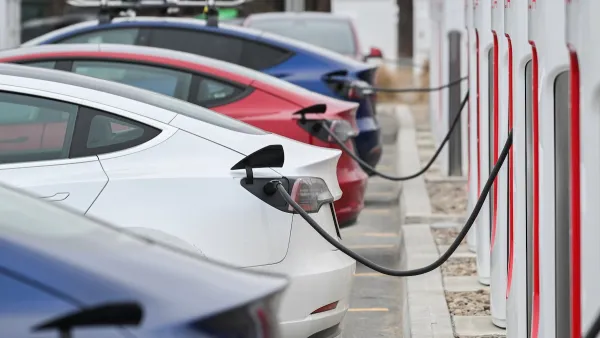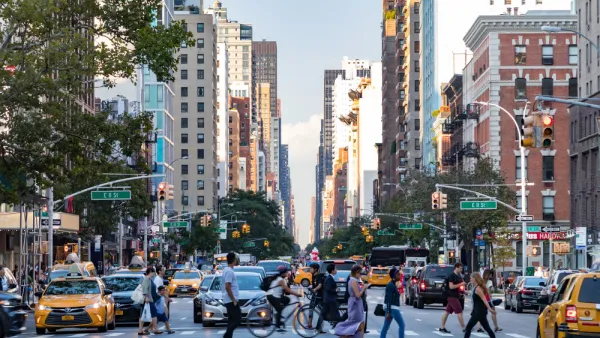With jaywalking enforcement policies recently making news in New York City and Los Angeles, more of the media is pushing back on long-held assumptions about who rules the road. Here’s a primer on how jaywalking became a crime.
With the recent conversation about jaywalking enforcement in New York City and Los Angeles as a back-drop, Aidan lewis provides a sweeping history of how the term “jaywalking” came to be a cultural signifier for “ignorant” and then, finally, a crime.
Lewis quotes Peter Norton, a history professor at the University of Virginia and author of Fighting Traffic - The Dawn of the Motor Age in the American City throughout the article, first to describe the origins of the term “jaywalking”: “The word was first used to describe ‘someone from the countryside who goes to the city and is so dazzled by the lights and the show windows that they keep stopping and getting in the way of other pedestrians’.”
Of course, the incredibly powerful auto industry lobby has a lot to do with the prohibition of jaywalking: “A key moment, says Norton, was a petition signed by 42,000 people in Cincinnati in 1923 to limit the speed of cars mechanically to 25mph (40kph). Though the petition failed, an alarmed auto industry scrambled to shift the blame for pedestrian casualties from drivers to walkers.”
Then clowns were employed to “portray jaywalkers as a throwback to rural, ignorant, pre-motor age ways,” and Boy Scouts handed out fliers to pedestrians to inform them of the rightful position on the street (i.e., the sidewalk).
The anti-jaywalking agenda also infiltrated newspapers and education, et voilà: “Anti-jaywalking laws were adopted in many cities in the late 1920s, and became the norm by the 1930s.”
FULL STORY: Jaywalking: How the car industry outlawed crossing the road

Analysis: Cybertruck Fatality Rate Far Exceeds That of Ford Pinto
The Tesla Cybertruck was recalled seven times last year.

National Parks Layoffs Will Cause Communities to Lose Billions
Thousands of essential park workers were laid off this week, just before the busy spring break season.

Retro-silient?: America’s First “Eco-burb,” The Woodlands Turns 50
A master-planned community north of Houston offers lessons on green infrastructure and resilient design, but falls short of its founder’s lofty affordability and walkability goals.

Test News Post 1
This is a summary

Analysis: Cybertruck Fatality Rate Far Exceeds That of Ford Pinto
The Tesla Cybertruck was recalled seven times last year.

Test News Headline 46
Test for the image on the front page.
Urban Design for Planners 1: Software Tools
This six-course series explores essential urban design concepts using open source software and equips planners with the tools they need to participate fully in the urban design process.
Planning for Universal Design
Learn the tools for implementing Universal Design in planning regulations.
EMC Planning Group, Inc.
Planetizen
Planetizen
Mpact (formerly Rail~Volution)
Great Falls Development Authority, Inc.
HUDs Office of Policy Development and Research
NYU Wagner Graduate School of Public Service




























